The skull of the 'real' Winnie goes on display
- Published
The 'real Winnie' skull is going on public display for the first time
The skull of the bear that inspired the Winnie-the-Pooh books is going to be put on public display for the first time, in a London museum.
Christopher Robin's teddy bear, which gave the name to AA Milne's books, was named after Winnie, a black bear he liked to visit in London Zoo.
Winnie died in 1934, and her skull was kept by the Royal College of Surgeons.
It was identified by curators in a review of the collection and will be exhibited at the Hunterian Museum.
The black bear had been something of a celebrity at London Zoo in the 1920s, a star attraction for visitors and known for her friendliness.

BBC Radio 4's PM programme reports on how the skull of the real-life Winnie has been revealed after 80 years.

AA Milne's son, Christopher Robin, was a regular visitor and was photographed inside Winnie's enclosure feeding her honey from a spoon.
An examination of the bear's skull has shown that she had lost most of her teeth in old age - and museum director Sam Alberti suggests that this could have been because of children feeding her honey or sticky buns.
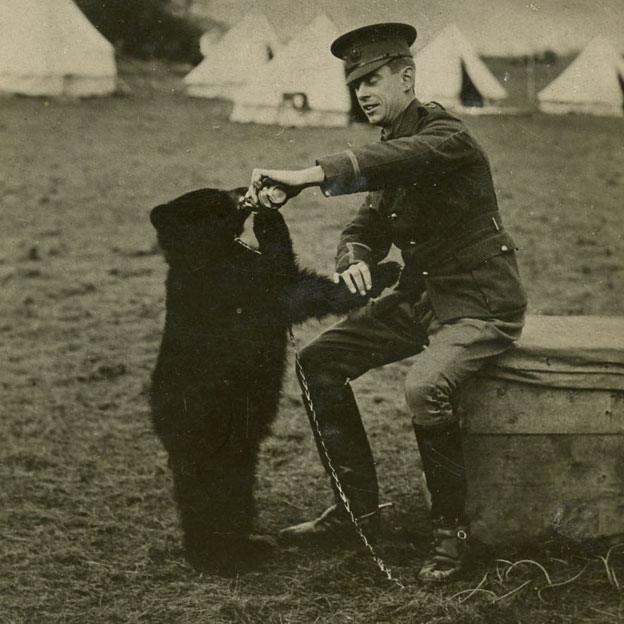
Harry Colebourn, a vet and soldier, bought Winnie when she was a cub
Christopher Robin's favourite teddy bear was renamed Winnie in her honour - with "the Pooh" later attached. And from the mid-1920s, his father's stories about the teddy began to be published.
Winnie, her name an abbreviation of Winnipeg, was a black bear brought to England from Canada in 1914.
The bear's owner, Harry Colebourn, was a vet from Canada who had enlisted at the outset of World War One, with Winnie becoming the regimental mascot of the Canadian Army Veterinary Corps.
Sam Alberti says many people will be surprised to discover the existence of Winnie's skull
When Capt Colebourn went with his regiment to France, Winnie was moved to London Zoo, where she remained for the rest of her life.
Abigail Woods, professor in the history of human and animal health at King's College London, says Winnie would have been an important commercial attraction for the zoo.
"People would come to the zoo specifically to meet Winnie, to watch her playing, to have photographs taken with her, feed her honey," said Prof Woods.
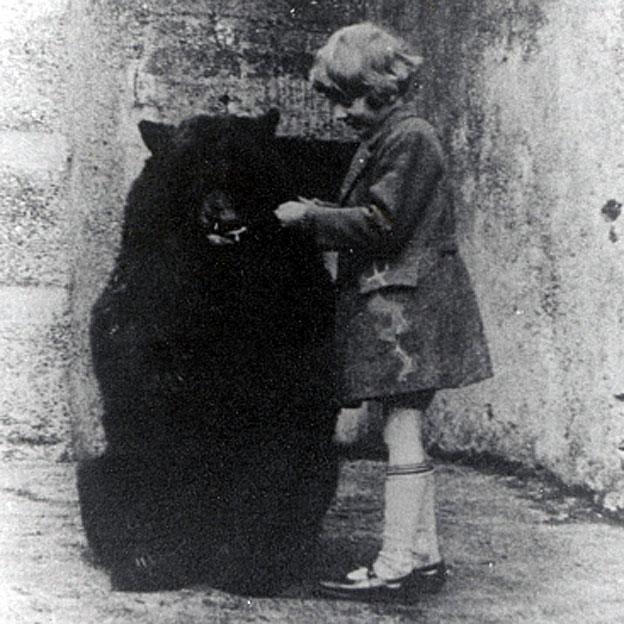
Christopher Robin feeding Winnie in her enclosure in London Zoo in the 1920s
The use of human names for animals was a way of helping visitors to connect with animals, "not to see them as wild animals, but as friendly companions".
And when zoo animals died, their bodies were sought after as being "very valuable for scientific research", said Prof Woods, who is researching the relationship between human and animal health, external.
After Winnie's death, her skull was kept by the curator of the Odontological Museum, part of the collection of the Royal College of Surgeons.
The skull has been stored since the 1930s, along with 11,000 other animal skulls, at the Hunterian Museum in central London.
But for the first time it is going to be put on public display, following an event which was part of the Being Human, external festival.
Abigail Woods says Winnie would have been a major attraction for London Zoo
While the fictional Winnie-the-Pooh went on to Hollywood movies, the remains of the real Winnie last appeared in a 1930s text book about the dental health of animals.
The interest in the bear has remained high - with Winnie-the-Pooh rated last year as the favourite children's book of the past 150 years.
The commercial value of Pooh-related media and merchandising has been estimated at more than £3.6bn per year.
The original stuffed teddy Winnie-the-Pooh, along with other toys owned by Christopher Robin, is on display in New York.
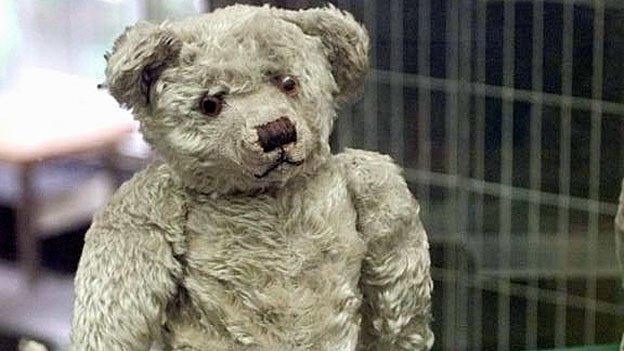
The original Winnie-the-Pooh teddy bear is now on display in New York
But there was a less happy fate for another bear in the story. The illustrator Ernest Shepard used his son's teddy bear Growler as a model for his drawings, but he later admitted that the teddy had not survived an attack by a dog.
Lindsay Mattick, the great grand-daughter of Harry Colebourn, living in Toronto in Canada, said the re-emergence of the bear's skull was going to come as a shock to people.
"I think people are going to be very surprised when they hear that part of the real Winnie is going to be on display," she said.
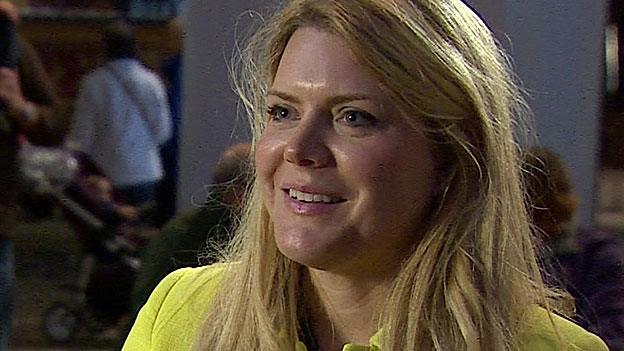
Lindsay Mattick is the great granddaughter of Harry Colebourn
"I was surprised - I had no idea that part of her did remain. The fact that we have something of her a hundred years later is pretty fascinating," said Ms Mattick, who has written a book about the bear, Finding Winnie: The True Story of the World's Most Famous Bear
"Our family feel very proud of the fact that our relative - Harry Colebourn - did something very simple.
"A hundred years ago he bought a bear cub, a pet, because he loved animals. He was heading off to war and he had no idea that this one very simple action would go on to have such amazing consequence."
Dr Alberti, director of museums and archives at the Royal College of Surgeons, said: "We thought really hard about bringing her out on display, because this isn't Winnie-the-Pooh, a cuddly fluffy bear wandering around. This is a skull.
"But it's why the skull is here that is the take-home story for us. The skull is here alongside the skulls of many other animals. We took a lot of animals who died in London Zoo to understand their anatomy, the science behind these animals.
"So the story for us is a happy one, we have this research collection to understand how animals behave and the diseases they're subject to."
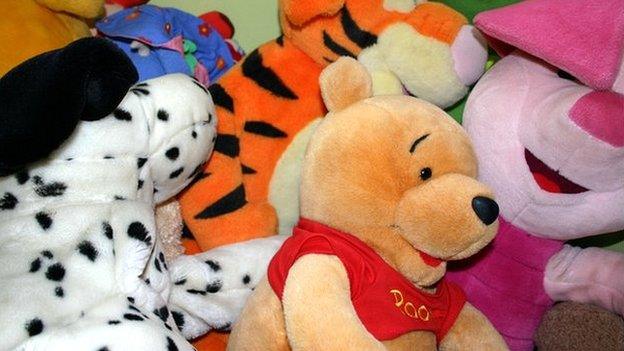
Bear market: Winnie-the-Pooh's merchandising has been valued at more than £3.6bn per year
And what would Winnie have made of becoming a museum exhibit?
"I think Winnie-the-Pooh would have been very curious to learn that the bear that had inspired him ended up here," said Dr Alberti.
Winnie's skull is on show at the Royal College of Surgeons' Hunterian Museum, external, Lincoln's Inn Field, London.
- Published16 February 2015

- Published10 December 2014
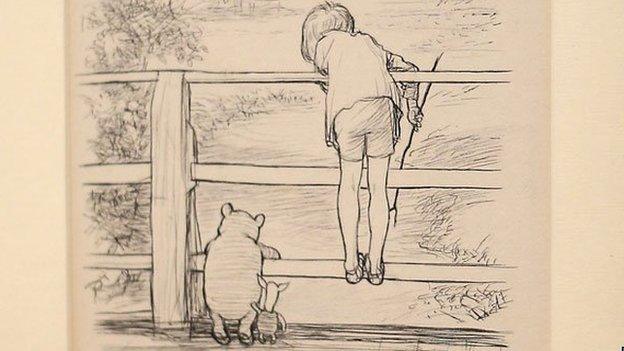
- Published2 June 2014
